Kentucky losing family farms and farmland at a rapid clip — at what cost?
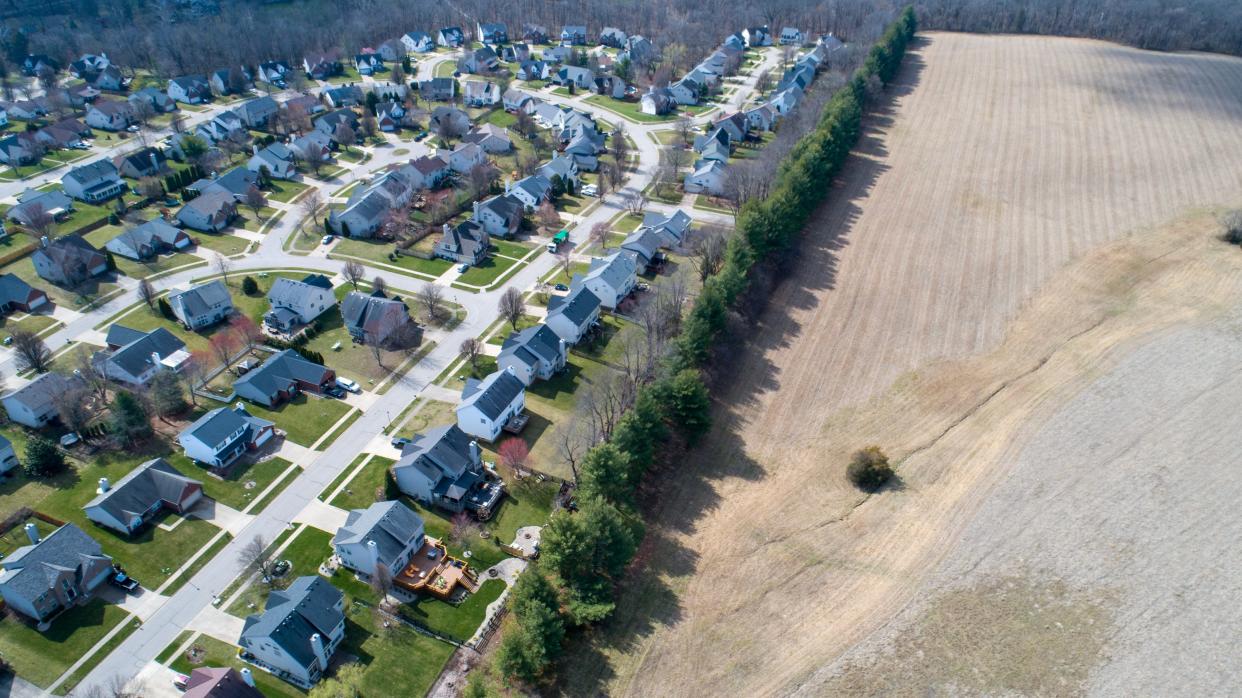
HODGENVILLE, Ky. — A warm winter in LaRue County has left henbit flowers to flourish, spattering empty crop fields with a purple harbinger of spring.
From the front seat of his pickup, Ryan Bivens gazed past one of his fields, through barren trees toward a horizon of white rooftops, and saw another harbinger for farmers.
The construction site of a gargantuan electric vehicle battery plant in Glendale represents thousands of jobs and billions of dollars of public and private investment in the electric vehicle industry.
To Bivens, a first-generation corn, soybean and wheat farmer, it also represents “1,500 acres of prime farmland that will never be farmed again.”
Across Kentucky, farmland is vanishing under a blitz of concrete and asphalt.
Farmland declined by half a million acres in Kentucky between 2017-22, new U.S. Department of Agriculture data shows, as suburban sprawl and other forms of development have gobbled up crop fields, pasture and woodlands.
It takes hundreds of years to form mere centimeters of topsoil. Where land has been converted for other uses, once-prime farmland often can never be farmed again.
And as the industry loses ground, it’s also losing more than a thousand family farms in Kentucky every year, according to the 2017-22 data. Thin margins and economies of scale have forced mid-sized farming operations to “get big or get out,” an enduring doctrine of past USDA administrations that has driven farm consolidation.
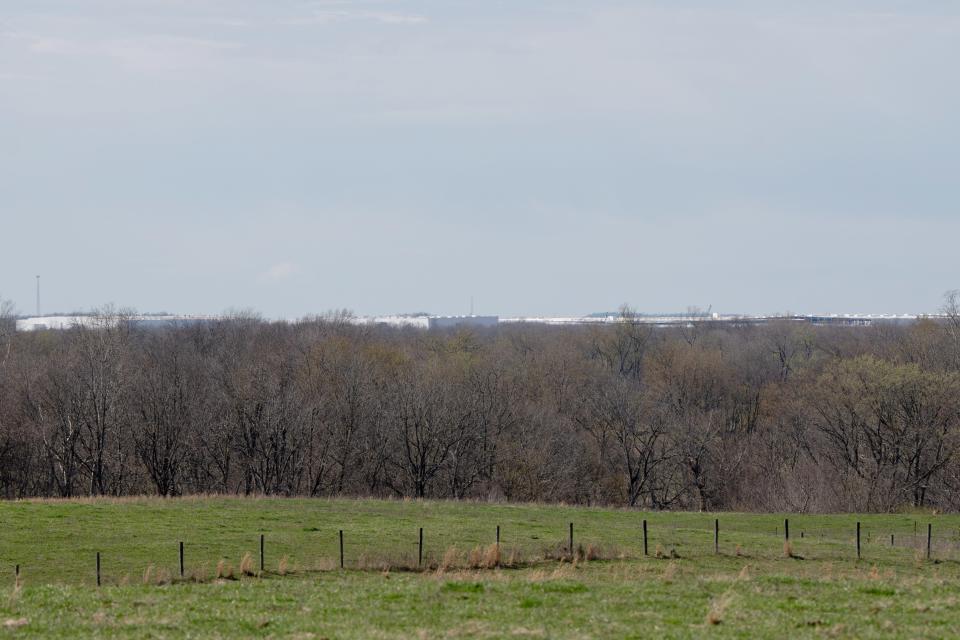
Kentucky’s farm communities, forced to adapt in the wake of a decimated tobacco industry, are facing “the biggest structural change of any state's agricultural base in the United States,” said Will Snell, a professor in the Department of Agricultural Economics at the University of Kentucky.
The USDA’s latest census of the industry came early in the tenure of Jonathan Shell, Kentucky’s new commissioner of agriculture, who has touted a vision of agriculture as economic development and sees promising productivity numbers for the industry.
But Shell takes the helm at a time when the driving forces of Kentucky agriculture — acres of land and the families who farm it — are gradually disappearing.
‘Not dirt to us’
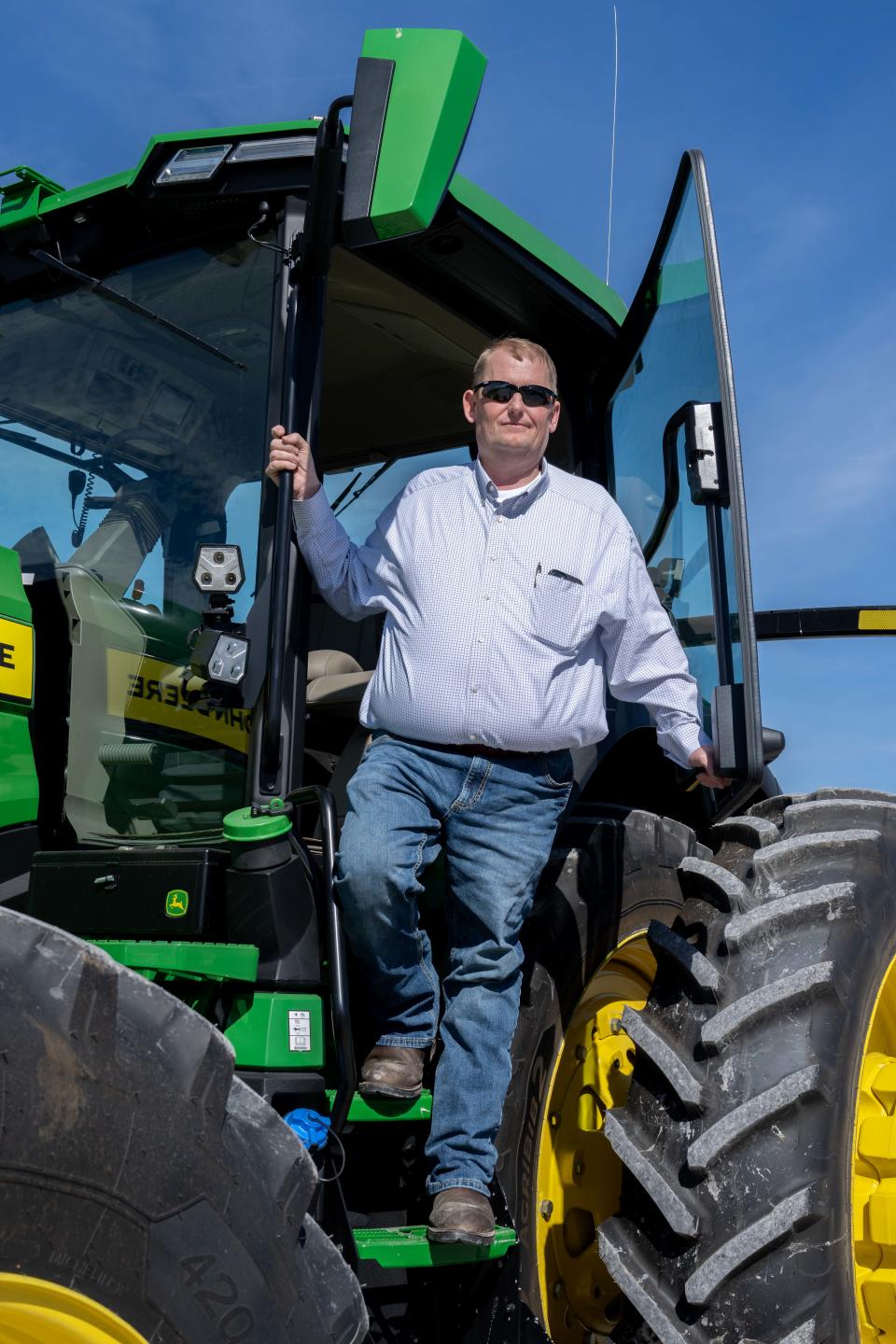
The Glendale battery project has spurred considerable land use changes beyond its property lines. Roads are widening, some neighbors are selling, and investors are buying — sometimes at $25,000 per acre — in anticipation of an economic boom as the massive plant begins operations.
“There's people that have paid some high dollars for ground,” Bivens said, “and they’re speculating on the future.”
But he worries about the farmland lost in the transition, and the larger trend unfolding around the state and the country.
“That’s not dirt to us,” he said. “That’s soil.”
In interviews with The Courier Journal, farmers around Kentucky with operations of all sizes echoed the same concerns: Farmland is disappearing at an alarming rate, and increasing land prices are adding stress for farm owners already working in a notoriously unpredictable business.
At stake is the longevity of a Kentucky industry estimated to have about $50 billion in economic impact for the state.
Through technological advances and economies of scale, Kentucky agriculture has steadily increased productivity, even with fewer farms and fewer acres. In 2022, the market value of agricultural products sold was more than $8 billion — an increase of nearly 160% compared to two decades prior, according to USDA data.
But farm consolidation can bring consequences for rural communities. And farmland may become more vital in the coming decades, as a changing climate has brought an uptick in severe weather events in Kentucky, threatening to wash away topsoil and wipe out crop yields.
Some of Kentucky's woes are mirrored nationally. Between 2017-22, as the commonwealth lost about 520,000 acres of farmland, the U.S. lost more than 20 million acres — an area the size of Maine, once used for crops, pasture and grazing.
Announcing the data release in February, Tom Vilsack, the secretary of agriculture, called it a “wake-up call.”
“Are we OK with losing that many farms? Are we OK with losing that much farmland?” Vilsack asked. “Or is there a better way?”
Farmers up against sprawl
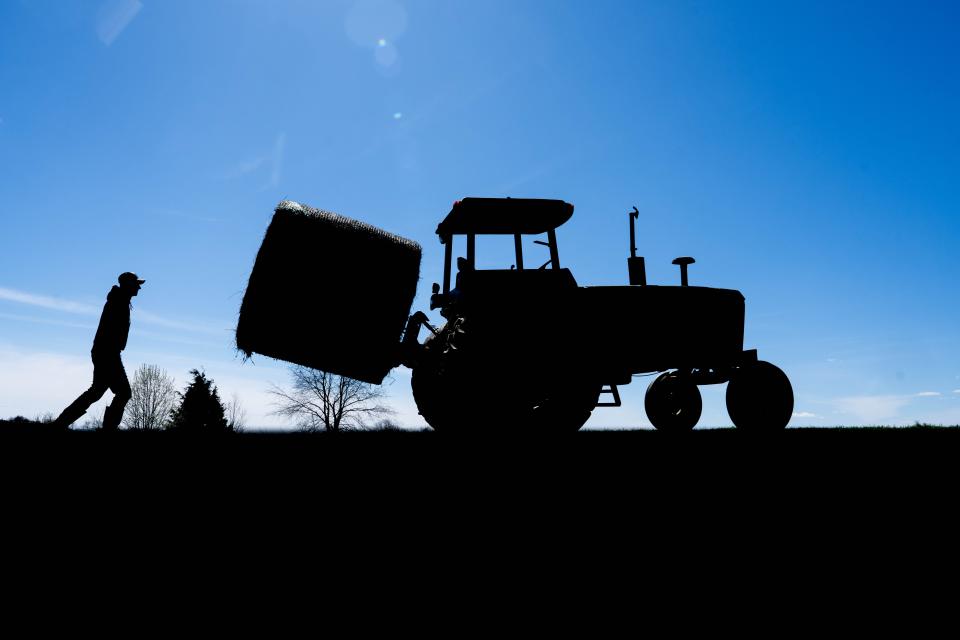
On a windy day in March, Joseph Fischer climbed into his tractor to haul a bale of hay for a herd of cattle and their calves.
As the herd gathered to feed, Fischer pointed across the road to a hill overlooking his farm, tucked in the rolling fields of Henry County, just outside Turners Station.
“There used to be a bunch of cows over there,” he said. “They’re gone.”
In their place, a cluster of houses now stands.
“It is kind of odd to see land go like that,” Fischer said. “That land’s never gonna get farmed again.”
Developers around Louisville and elsewhere have been in a rush to build housing in light of long-standing shortages and affordability issues. Louisville Mayor Craig Greenberg has announced a goal of 15,000 new affordable housing units in his first term, with a plan also calling for zoning reform to deter irresponsible sprawl.
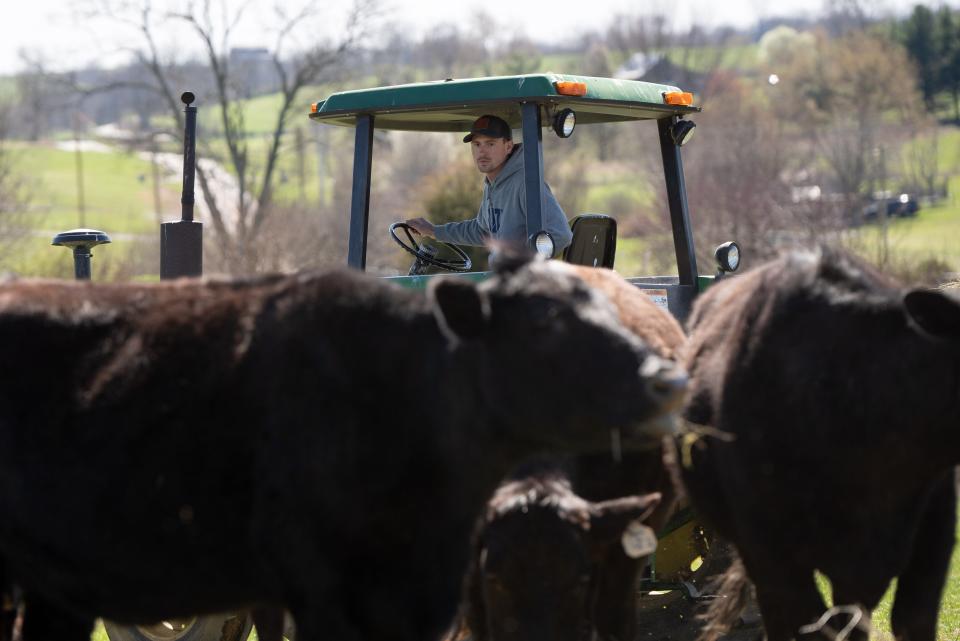
But sprawl has remained steady, and developers are offering landowners significant money for the property they want, some observers said.
In areas around Bowling Green, Snell said he’s heard of developers offering farmers up to $30,000 per acre for their land.
East of Louisville, development has surged into Oldham County, transforming bucolic farm country into subdivisions, and adding to existing barriers for farmers.
“The price of land … I don’t see how anybody could purchase a farm in Oldham County to farm it,” said Clint Woods, another Henry County cattle farmer. "It’s hard enough in Henry.”
Selling land to developers is an increasingly attractive exit strategy for farmers facing high input costs and erratic commodity markets. And Kentucky farmers are getting older, with an average age ticking up to 57 years old in 2022, and more than a third of producers ages 65 or older.
“You can't blame these landowners for looking at that opportunity,” said Shell, Kentucky’s commissioner of agriculture. “Right now, in some cases, the most profitable thing that you can do with your ground is sell it.”
About half of the land in Kentucky is still in farms, an estimated 12.4 million acres in 2022, compared to 13.8 million two decades prior.
But across the U.S., the remaining land at stake is often “nationally significant” farmland, consisting of the country’s most fertile soil, according to models from American Farmland Trust.
The group found Kentucky had a high threat of farmland conversion compared to other states — and “scored among the lowest states for policies and programs that address the threat of conversion.”
As Kentucky farmland is converted for development, farming is pushed onto less and less productive land, where farmers may see lower crop yields, and risk more economic uncertainty.
Kentucky’s family farms are disappearing
Jim Tom Galbreath remembers a time when there was a dairy farm on just about every corner in Fleming County. Each one typically grew at least a few acres of tobacco, too.
“Up here, tobacco was king,” he said.
Now, the tobacco industry has all but disappeared. And Galbreath said over the last decade, all but a few of the area’s dairies have gone, too.
A major driver of the changes in Kentucky agriculture has been the steep decline of the state’s once-mighty tobacco industry.
Nearly 47,000 Kentucky farms were growing tobacco in 1997, according to USDA data. By 2022, that number was less than a thousand — a 98% decrease in 25 years.
For years, burley tobacco farming helped small and mid-sized farms survive, said Snell, the agriculture economist. Then, government price support programs for tobacco ended, domestic demand dropped, and Kentucky farmers had to adapt.
“I grew up on what I call a mid-size, full-time farm in central Kentucky, and we had 40, 50 head of cattle. We raised some grains. We had five acres of tobacco,” Snell said. “And that was enough back in the ‘70s to put a couple of kids through college.
“That won't do it anymore in this environment.”
Today, the industry is built to support what Snell calls a “bimodal distribution”: small farms with a supportive niche, like agritourism or direct-to-consumer business models, and large farms with enough land to take advantage of economies of scale.
Farms caught in the middle are often fighting to stay afloat. The struggle is evident in more than 5,600 family farms that disappeared from the Kentucky landscape between 2017-22, according to the USDA’s recent census.
Galbreath, a cattle and soybean farmer in Fleming County, also works with other producers through a local farm supply company. In his role working with other farmers, he says the line between friends, family and business is often blurred — and he sees the stress and toll of the business firsthand.
“I don’t know how some of them sleep at night, and some of them don’t,” Galbreath said. “It’s their livelihood.”
Many farmers also work off-farm jobs for another steady stream of income, including Fischer, in Henry County, who works as an electrical apprentice in addition to running the cattle farm.
While family farms still make up a vast majority of the state’s total operations, the average farm size has continued to grow, indicating consolidation in the industry, and farmland in fewer hands.
“I'm still optimistic about the future of ag,” Snell said. “But it's just likely going to be fewer people involved. I don't see the trend of the larger farms getting smaller. They're going to continue to try to add on acres.”
Curtis Weatherford farms 4,000 acres of row crops in Hickman County, in the Jackson Purchase region. It’s a larger farm than most in Kentucky — but he’s competing with even larger neighbors.
“To continue to compete with them, we'll have to continue to grow,” Weatherford said, “or we’ll get bought out.”
The myriad challenges of farming, and its unpredictable profitability, have given some families pause in continuing in the business. And as farmers age and retire, their land is set to change hands.
Part of the puzzle of preserving Kentucky farmland means figuring out how to ensure the land stays in the hands of someone who wants to farm it.
Myrisa Christy, executive director of Community Farm Alliance, said that means improving the farm safety net and access to capital, so future generations of farming families have the financial tools to continue.
But it also means expanding support for non-generational farmers — those who don’t have land passed down to them.
“We've got to stop relying on the sons and daughters and grandsons and granddaughters of farmers to fulfill the family business,” Christy said, “because that's not working.”
'A farmer’s retirement plan shouldn’t be to die'
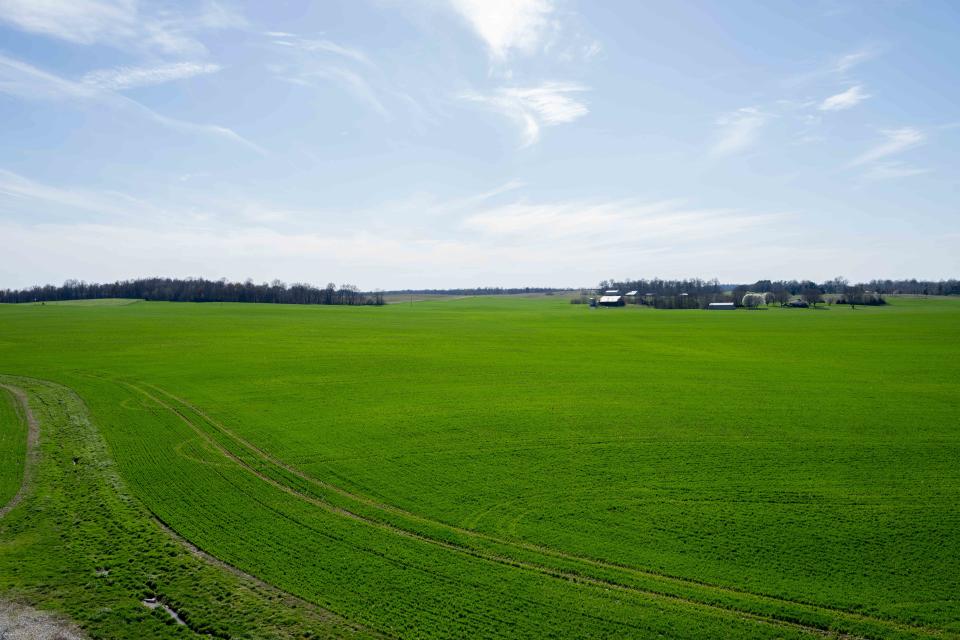
Similar to national trends, the average Kentucky farmer is getting older. For young, underrepresented or non-generational farmers, barriers to entry in Kentucky agriculture can seem insurmountable.
Even for children of farmers, other pursuits may be more appealing.
“You can’t ask a young person to go into it easily,” Galbreath said. “There’s nothing easy about it.”
When Weatherford’s father was establishing a Hickman County farming operation in the 1970s, land, equipment and other input costs were a fraction of the cost.
Now, Weatherford says it might cost him anywhere between $750-$900 to farm an acre of corn, “and the profit point's not there.”
“That kind of deters some of the younger people, and especially first-generation farmers,” he said. “If you're trying to go out and get land … and you're trying to get equipment to farm it, it's just almost impossible.”
Ford Waterstrat, a first-generation organic farmer near London, Kentucky, “fell in love with it.” He’s learned to work through a Community Supported Agriculture program, a form of direct marketing, and also sells to stores in Louisville, Lexington and elsewhere, including Whole Foods and Rainbow Blossom.
But it’s also arduous work. He has young children, and “it's way too early to tell if they have any interest in farming,” but he’s “totally cool with it if they don’t.”
Relying on farmers’ children to take on the often onerous family business has not proven a successful model for holding onto family farms, or Kentucky farmland, Christy said, and “a farmer’s retirement plan shouldn’t be to die.”
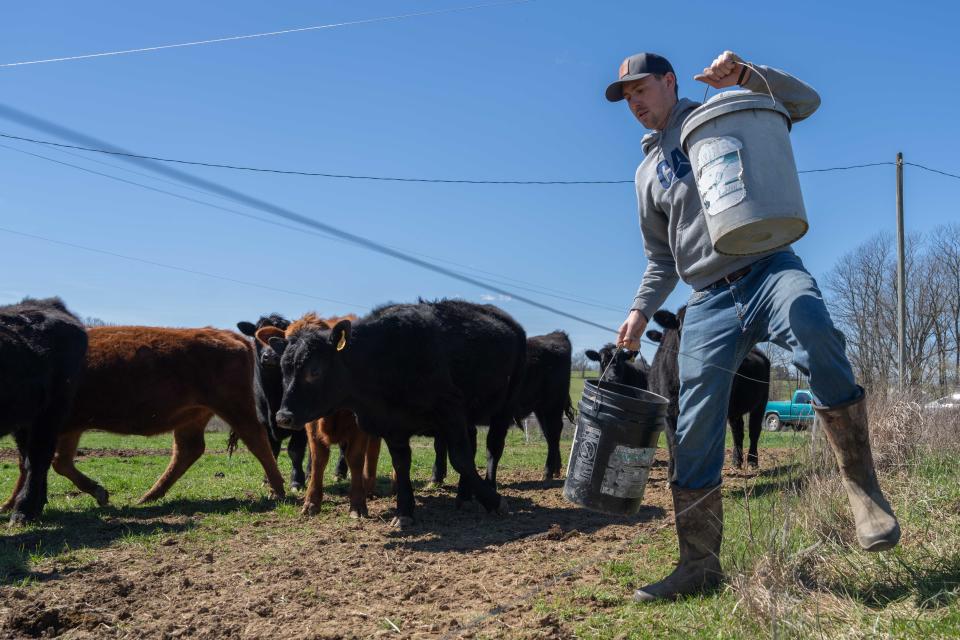
Christy, who has roots in family farming in Appalachia, also pointed to inequity in the model of relying solely on generational farmers. In 2022, nearly 99% of Kentucky agriculture producers were white, according to USDA census data.
And without a sustainable strategy for making farm ownership accessible to those who want to do it, the industry will likely continue to consolidate.
That means wealth in fewer hands, Christy said, and more people working in the industry as farmhands rather than owners who have a stake in a farm’s long-term success.
The state has programs to offer access to capital for farmers, including through the Kentucky Ag Finance Corporation. But Christy also advocated for a reformed and expanded farm safety net, and improving awareness of resources like whole-farm revenue plans, which can offer insurance protection to diversified farms.
Farm incubation programs also help bring non-generational farmers into the fold. But at the end of these programs, farmers don’t keep the land they’ve worked, Christy said, meaning they’re not building equity in it.
“It's trying to teach people how to farm,” she said, “but it's not necessarily making farmers.”
What’s lost when farms disappear
As a chasm widens between large and small farms, some have witnessed a loss of culture and community in rural Kentucky.
Mary Berry is an eighth-generation Henry County farmer and executive director of the Berry Center, which seeks to uphold the ideas and writings of her father, Wendell Berry, by supporting “small farmers, land-conserving communities, and healthy regional economies.”
“Every town in Henry County could be said to be dead or dying,” she said. “And that is true all over the state of Kentucky.”
The result is social upheaval, and rural communities that have “lost a sense of ourselves," Berry added. Her organization is looking to reverse those trends by bringing stability to local farmers.
Our Home Place Meat, an initiative of the Berry Center, is a cooperative program helping small and mid-sized farms sell meat directly to regional markets.
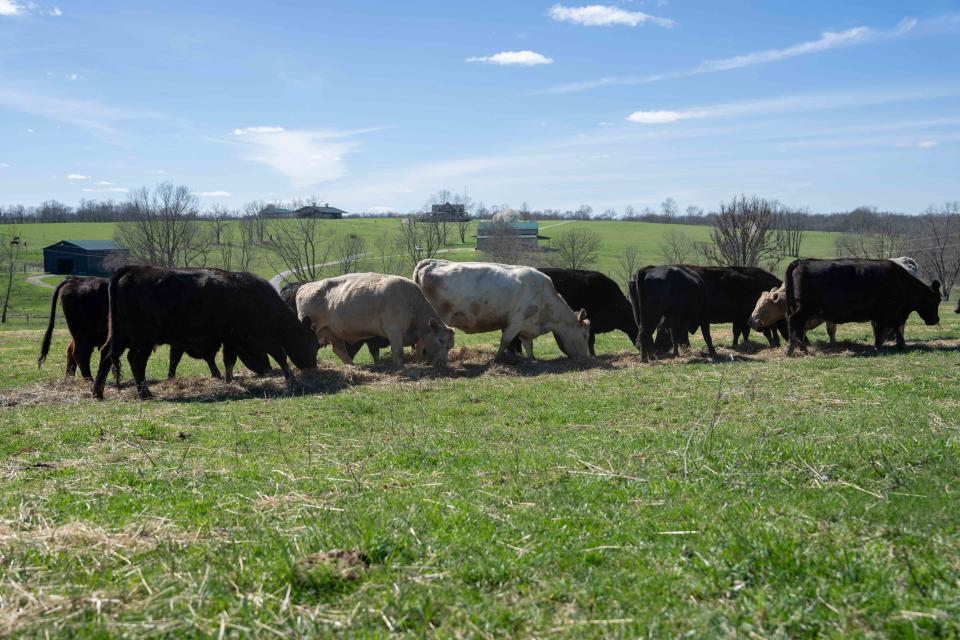
Fischer and other farmers sell their beef through the program at a set price, avoiding fears of market fluctuation. In exchange, they follow higher standards in their farming, like animal welfare and land management practices.
Other groups are looking for permanent ways to keep Kentucky’s prime farmland out of development. Land trusts like Bluegrass Land Conservancy work with farm owners to ensure land is protected in perpetuity through conservation easements.
The conservancy recently announced an award of more than $45 million in federal grants, earmarked for landowners to incentivize conservation easements.
Berry’s vision diverges from that of state leaders like Shell, whose economic development approach aligns more with the agribusiness focus on productivity.
But Shell also lauded programs to support young farmers, and expressed concern about the rate of farmland conversion, adding, “We need to protect prime farmland at all costs.”
The farmers responsible for both working and conserving the farmland still covering half of Kentucky are often left to “figure it out,” Berry said, as development pushes into agrarian communities, extreme weather events proliferate and markets shift.
“Are we, or are we not, going to take care of our land and our people?” she asked. “The answer, for a long time, has been in the negative, and we need to change the answer.”
Connor Giffin is an environmental reporter for The Courier Journal and a corps member with Report for America, a national service program that places journalists in local newsrooms to report on under-covered issues. The program funds up to half of corps members’ salaries, but requires a portion also be raised through local community fundraising. To support local environmental reporting in Kentucky, tax-deductible donations can be made at courier-journal.com/RFA.
Learn more about RFA at reportforamerica.org. Reach Connor directly at cgiffin@gannett.com or on X @byconnorgiffin.
This article originally appeared on Louisville Courier Journal: Kentucky losing family farms and farmland at a rapid pace

